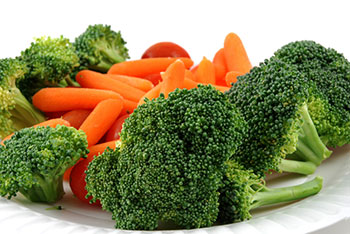More Health and Nutrition Bites
Related
Is It a Meal, or Is It a Snack?
I get questions about snacking all the time: "What should I have for snacks?" or "Is this a healthy snack?" While I've written essays about what to snack on, people do seem to have trouble with their snacking. What is the difference between a meal and a snack?
Best Snack? Nuts!
When I'm giving a lecture about eating healthy, someone invariably asks about snacking. As you may already know, I'm not a big fan of snacking between meals when you're trying to lose weight. All too often that snacking simply adds calories that you don't need. Still, people really want to know what is the best snacking option.
Guilt Free Snacks and Treats
I started to write about "what not to eat" this week and was thinking about snacks. This is a pretty easy target on the one hand, but on the other there's just so much on the shelves now that presents challenges that it's hard to know where to begin. It's not that cookies are bad, for example - it's that there are so many bad cookies on the market.
Health & Nutrition Bites
Get the latest health and diet news - along with what you can do about it - sent to your Inbox once a week. Get Dr. Gourmet's Health and Nutrition Bites sent to you via email. Sign up now!
Adolescents low in fruits and vegetables

We've known for a while that a diet high in fruits and vegetables can help reduce your risk of many chronic diseases, including heart disease, cancer, and diabetes. Since healthy eating habits are most easily set early in life, childhood and adolescent eating habits are becoming an important topic in dietary research.
Recently a group at the University of Minnesota created a study to look at fruit and vegetable consumption in adolescents and how it might change over time (Am J Prev Med 2007;32(2):147-150). They recruited 944 young men and 1,161 young women through their junior or senior high schools, resulting in a younger group and an older group. (Their parents' approval was required to participate in the study.) The participants filled out a dietary survey which asked them about their usual intake of various foods, including fruits, vegetables, and juices. Five years later, the subjects were recontacted and asked again about their usual intake of various foods.
The younger group began in junior high school and five years later were in senior high school. At the start of the survey, this group had eaten a little over four servings per day, but five years later they were down to a little over three.
Meanwhile, the older group, which began in senior high school, both men and women further reduced their intake of fruits and vegetables by a little over half a serving. Girls were still getting more fruits and vegetables than boys, but neither were anywhere near the recommended amounts of fruits and vegetables for adults: five servings per day.
What this means for you
If you have kids, make a variety of fruits and vegetables available for them to snack on whenever they wish. Even if you don't have kids, support community efforts to make healthier options available in school lunchrooms and vending machines. Getting kids used to reaching for healthy options will serve them well all their lives.
First posted: February 7, 2007
